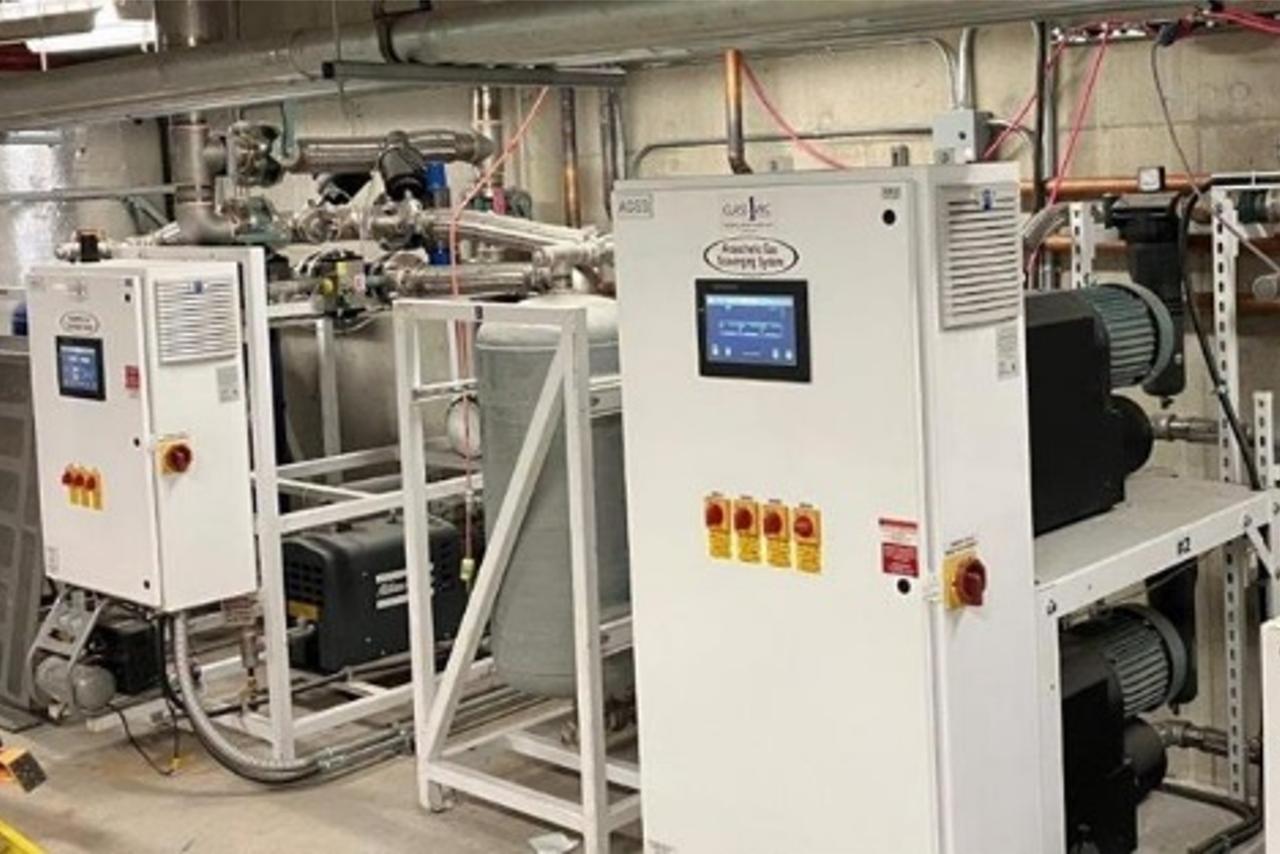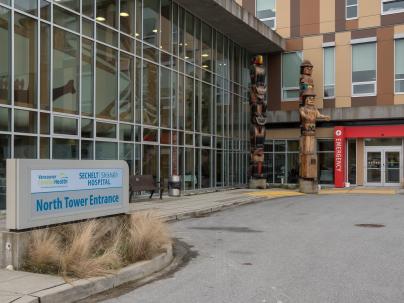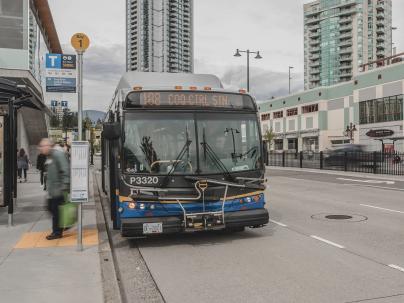Improving health systems for a healthier planet
VCH is taking action to improve health systems for environmental sustainability – from business practices, to managing facilities, to delivering care, and supporting climate mitigation and adaptation efforts in communities and First Nations.
On this page
- Expanding anesthesia programs
- VGH the first B.C. hospital to implement an anesthetic gas filtering system
- Since fall 2021, the anesthetic gases captured and filtered at VGH are equivalent to the environmental impact of:
- Vancouver acute pre-admission clinic
- Food as medicine: nurturing Indigenous wellness
- Low carbon cooling systems
- Sustainability highlights

Five-year planetary health strategy
In 2024, VCH developed its first five-year planetary health strategy to address the challenges of climate change. The strategy focuses on reducing VCH’s carbon footprint, advancing sustainability, and supporting community adaptation and mitigation efforts.
Taking care of the health of the planet, particularly through lower greenhouse gas emissions, protecting the natural environment and reducing resource use and depletion, is an important part of human health.
In collaboration with staff and medical staff, as well as through provincial partnerships, we are dedicated to delivering resilient and environmentally sustainable care for the health of people, places and the planet.
Expanding anesthesia programs
One new project is focusing on the delivery of high-quality, lower-carbon care by expanding regional anesthesia programs.
Regional anesthesia is a type of pain management for surgery that numbs a part of the body. Compared to general anesthesia, it can decrease patients' post-surgery pain, nausea and vomiting; cause fewer complications; and patients can be discharged earlier.
As we work to reduce the health system's environmental impact, it lowers the carbon footprint of surgical care when compared with inhaled anesthesia.
At the Providence Health Care Breast Centre at Mount Saint Joseph Hospital, regional anesthesia has successfully become the default anesthetic for breast cancer surgery.
Motivated by the success and experience of work at Mount Saint Joseph Hospital, an anesthesia team is expanding the use of regional anesthesia to additional surgical procedures at Vancouver General Hospital and UBC Hospital, through pilot project in 2024.
-

Better patient experience
-

Quicker recovery time post-surgery
-

20 per cent decrease in operating room time
-

Approximately 25 per cent reduction in use of inhalation anesthetics and direct surgical suite green-house gas emissions.

VGH the first B.C. hospital to implement an anesthetic gas filtering system
Anesthetic gas is administered in operating rooms when a patient is put to sleep before an operation. The exhaled and leftover gas from each patient’s procedure is collected and travels through tubes to the basement of the hospital, where it is filtered into large metal propane-style tanks, allowing clean air to be released back into the environment.
By integrating these systems into the hospital's ventilation networks, health-care facilities can significantly reduce their environmental footprint.
This new system is part of the hospital’s operating room renewal project, which featured 16 state-of-the-art operating rooms and a 40-bay pre-operative and post-recovery area.
Since fall 2021, the anesthetic gases captured and filtered at VGH are equivalent to the environmental impact of:
Growing approximately 2,000 trees for 10 years
Taking 65 passenger cars commuting 30 minutes (30 km) off the road for a year
Eliminating 287 barrels of oil
Vancouver acute pre-admission clinic
Seventy per cent of people come from outside of Vancouver for surgery at Vancouver General Hospital. Prior to surgery, patients must go to the hospital for pre-operative work, like a blood test.
Through a new program, a pre-admission clinic identifies patients that do not need to make the additional trip, saving on carbon dioxide emissions, and improving the patient experience.

Low carbon cooling systems
Traditional cooling system designs in existing VCH facilities are based on static historical data. In a changing climate, using past data no longer works. A design shift was needed, and with some health facilities requiring up to 40 per cent more cooling capacity by 2050, the health sector has a role in leading this transformation.
High indoor temperatures can make health conditions worse in patients and increase recovery times. Medical equipment performance is impacted, and operational disruptions such as equipment failure and service interruptions can occur.
VCH teams came together to share knowledge and better understand organizational needs, assessing our current state and setting design criteria.
By using climate projections to inform and prioritize capital investments, VCH is future proofing its infrastructure. This planning process enabled a low carbon resilience lens, preparing for a shifting climate while identifying decarbonization opportunities.
Sustainability highlights
















